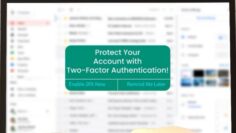Understanding the Risks of Tagging: How to Protect Your Privacy
Understanding the Risks of Tagging: How to Protect Your Privacy
In the age of social media, tagging friends in photos or locations has become a common way to share experiences. Whether it’s a fun dinner with friends or a visit to a local café, tagging can make the moment feel more connected. However, as with many aspects of online sharing, it’s important to be aware of the privacy risks associated with tagging. In this article, we’ll explore the potential dangers and how to protect your privacy—and the privacy of others—when tagging.
The Risks of Tagging Without Permission
Tagging is a fun way to let others know about your experiences, but it can also have unintended consequences.
1. Exposure of Personal Location
When you tag someone in a photo, especially with location data, you’re potentially revealing where they are at that moment. This can be a concern for various reasons, particularly if someone is in a public place or a sensitive location. For example, tagging someone at their home, office, or a private gathering can expose their whereabouts to a wider audience than they’re comfortable with.
2. Unintended Privacy Breach
Even when tagging with good intentions, it’s essential to consider how much of the other person’s private life is being shared. Not everyone may want their image shared publicly, especially in contexts like casual meetups, private moments, or social settings they want to keep within a trusted circle. For some, even the act of tagging is seen as an invasion of privacy.
3. Social Media Oversharing
Too much tagging can lead to oversharing. When tags are frequently added, personal lives can be mapped out across social media platforms. This oversharing might make others feel uncomfortable or even leave them vulnerable to digital stalking or exploitation. It’s always a good practice to be mindful of how tagging can paint a broader picture of someone’s habits or lifestyle.
How to Protect Privacy When Tagging
While tagging is a great way to share memories, it’s crucial to respect boundaries and privacy. Here are some best practices to ensure you’re tagging responsibly:
1. Always Ask for Permission First
Before tagging someone in a photo or location, always ask if they’re okay with it. Even if you think it’s a harmless photo or an innocent moment, it’s essential to check in with them. What may seem like a fun post to you could be an uncomfortable one for the other person.
2. Use Privacy Settings Wisely
Many social media platforms allow you to control who can see your posts and tags. Adjusting your privacy settings can limit the exposure of tagged content. For example, you can set your posts to be visible only to friends or specific groups, rather than the general public.
3. Think About the Context of the Tag
Consider the context before tagging someone. For instance, tagging someone at their office or in a sensitive situation could expose them to unwanted attention or risks. If in doubt, leave the tag out or consult with them first.
4. Avoid Real-Time Tags
Real-time tagging is a significant privacy risk, especially if you’re tagging someone at a public event or location. This can allow others to track someone’s movements or know when they are away from home, which can be dangerous. Wait until after an event or outing to tag someone or share photos.
5. Discuss Boundaries with Friends
Have an open conversation with your friends and family about privacy boundaries. Everyone has different comfort levels with social media and online sharing. Respecting these boundaries will make social interactions more comfortable and safer for everyone involved.
The Importance of Respecting Others’ Privacy
As digital privacy concerns grow, it’s important to be responsible in how we share information and tag others online. Privacy is a right, and respecting the personal space of those around us, even online, is crucial. By asking permission, adjusting privacy settings, and thinking carefully before tagging, you can help ensure that your social media interactions remain respectful and safe.
Always consider the privacy of others when tagging or sharing locations. Respect privacy settings and discuss boundaries with your friends.”
By being mindful of how we share and tag, we can create a safer, more respectful online community. Let’s work together to ensure that everyone feels comfortable and in control of their digital presence.


.png)


















